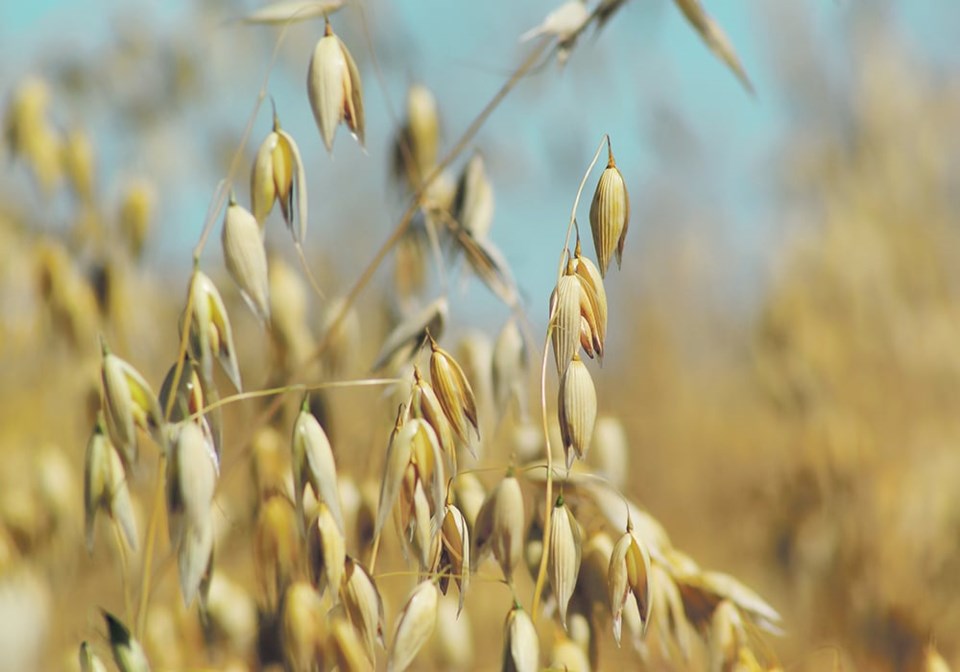WESTERN PRODUCER — A U.S. environmental group is pointing a finger at Canadian oat growers, saying they’re the cause of ag chemical residues found in Cheerios and Quaker Oats.
Late last week the Environmental Working Group (EWG) released a study on oats and chlormequat, a plant growth regulator marketed as Manipulator.
Farmers apply chlormequat to oats and cereal crops to decrease the height of plants and reduce the risk of lodging.
The EWG study, published Feb. 15 in the Journal of Exposure Science and Environmental Epidemiology, looked at the presence of chlormequat in urine and foods.
The scientists collected 96 urine samples from 2017-23, and chlormequat was detected in 77 samples, or 80 percent of cases.
The urine came from adults in Florida, South Carolina and Missouri.
The high rate of positive tests should raise “alarm bells,” the EWG said in a news release, because the “chemical is linked to reproductive and developmental problems in animal studies, suggesting the potential for similar harm to humans.”
Researchers tested 25 samples of food made from conventional oats and detected traces of chlormequat 23 times, or 92 percent of samples.
They also looked at food made from organic oats.
In those 17 samples, they detected chlormequat three times.
“These findings and chlormequat toxicity data raise concerns about current exposure levels, and warrant more expansive toxicity testing, food monitoring, and epidemiological studies to assess health effects of chlormequat exposures in humans,” say the authors of the EWG study.
Major media outlets in the United States picked up the EWG news release on the study, including CBS News, Forbes, People magazine and USA Today.
“Chemical That May Cause Infertility Found in Cheerios, Quaker Oats … 80% of Americans tested were found to have been exposed to chlormequat,” said an alarming headline from people.com.
General Mills, the maker of Cheerios, provided a statement to USA Today, saying that all of its products “adhere to regulatory requirements” and that “food safety is always a top priority at General Mills.”
Much of the media coverage didn’t mention the amounts of chlormequat detected in the EWG study and how that compares to the maximum residue level for chlormequat in oats.
In conventional oat-foods purchased in 2022 and 2023:
- The EWG found a median amount of 114 parts per billion in 2023 and 90 p.p.b. in 2022, which means 104 p.p.b. for the 25 samples of oat foods.
- The U.S. Environmental Protection Agency has an MRL for chlormequat in oats of 40 parts per million. For oat bran, the MRL is 10 parts per million
When converted to parts per million, 104 parts per billion looks much smaller. It is 0.104 parts per million, which is 384 times less than 40 p.p.m.
Another way of explaining the difference between 40 p.p.m. and 0.104 p.p.m., is daily consumption of eggs.
Eating one egg per day is not a problem. But eating 384 eggs in a day would be extremely hazardous to your health.
The amount of chlormequat in the urine samples was also much lower than the safe level of exposure, as defined by the EPA.
The Environmental Working Group acknowledged that reality in the journal article
“Current chlormequat concentrations in urine from this study … suggest that individual sample donors were exposed to chlormequat at levels several orders of magnitude below the reference dose published by the U.S. EPA (0.05 mg/kg bw (body weight)/day) and the acceptable daily intake value published by the European Food Safety Authority (0.04 mg/kg bw/day).”
The amount of chlormequat found in urine and oat foods may be very low, but public perception is reality when it comes to pesticides.
Headlines from the New York Post, Fox Business News and Newsweek, saying “pesticide found in oats linked to infertility,” is a massive public relations problem for the oat industry.
As well, the Environmental Working Group says Canadian farmers are the cause of chlormequat residues in oats.
In 2018, the EPA established an MRL for chlormequat, which allowed Canadian farmers to use the product. Then, the EPA increased the MRL in 2020 to 40 p.p.m.
However, U.S. growers are not permitted to use Manipulator on oats or other food crops. Therefore, the source of the chlormequat in oat foods must be Canadian farms, the Environmental Working Group says.
“Environmental Protection Agency regulations allow the chemical to be used on ornamental plants only – not food crops – grown in the U.S. But its use is permitted on imported oats and other foods sold here. Many oats and oat products consumed in the U.S. come from Canada.”
Contact [email protected]




